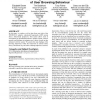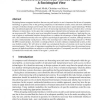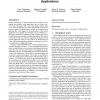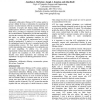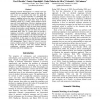306 search results - page 28 / 62 » Answering why and why not questions in user interfaces |
HT
2007
ACM
13 years 9 months ago
2007
ACM
In this paper, we analyse web log data from user trials of the WHURLE-LS adaptive educational hypermedia (AEH) system from a behavioural perspective. This system allows users to s...
MC
2001
13 years 9 months ago
2001
Designing human-computer interfaces that are easy and intuitive to use is important for the use of computer technology in general. Due to the growing complexity of information sys...
SIGMETRICS
2010
ACM
14 years 18 days ago
2010
ACM
Perhaps surprisingly, no practical performance models exist for popular (and complex) client applications such as Adobe’s Creative Suite, Microsoft’s Office and Visual Studio...
CSCW
2000
ACM
14 years 4 days ago
2000
ACM
Automated collaborative filtering (ACF) systems predict a person’s affinity for items or information by connecting that person’s recorded interests with the recorded interests...
ESWS
2005
Springer
14 years 1 months ago
2005
Springer
Managing semantic heterogeneity is a complex task. One solution involves matching like terms to each other. We view Match as an operator that takes two graph-like structures (e.g....
